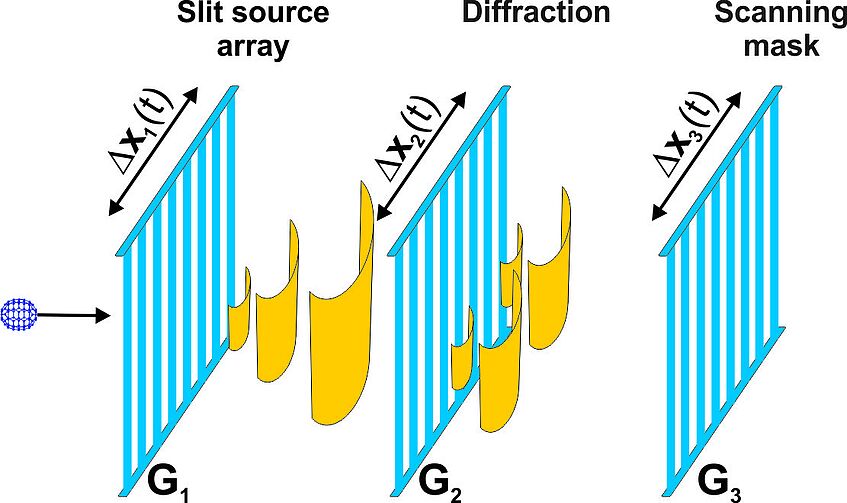Talbot-Lau Interferometer for Complex Molecules

Talbot-Lau Interferometer for Complex Molecules
Talbot Lau interferometry has become a key to many high-mass molecule interference experiments, since it can cope with spatially incoherent molecular beam sources. Compared to far-field diffraction, which requires tight collimation, the signal can be 1000-10000 times higher.
In a symmetrical TL-interferometer, the fringe pattern is determined by the period of the grating masks. The matter-wave nature of even complex molecules is then encoded in the modulation of the fringe visibility with the molecular de Broglie wavelength, which can be varied by varying the beam velocity (TLI, KDTLI) or the mass distribution (OTIMA).
For molecules up to around 1000 amu, nanomechanical masks with d=1000 nm period have proven fruitful. Substantially larger, more polarizable or more polar molecules require the use of optical gratings, to avoid the dephasing van der Waals interaction with the grating walls.
The TLI interferometer with d=990 nm gold gratings was used to demonstrate the first macromolecule interferometer at all and to monitor collisional as well as thermal decoherence.
References
- B. Brezger, L. Hackermüller, S. Uttenthaler, J. Petschinka, M. Arndt, A. Zeilinger
Matter-Wave Interferometer for Large Molecules
Phys. Rev. Lett. 88, 100404, (2002). - L. Hackermüller, S. Uttenthaler, K. Hornberger, E. Reiger, B. Brezger, A. Zeilinger & Markus Arndt
The wave nature of biomolecules and fluorofullerenes
Phys. Rev. Lett. 91, 90408 (2003).
